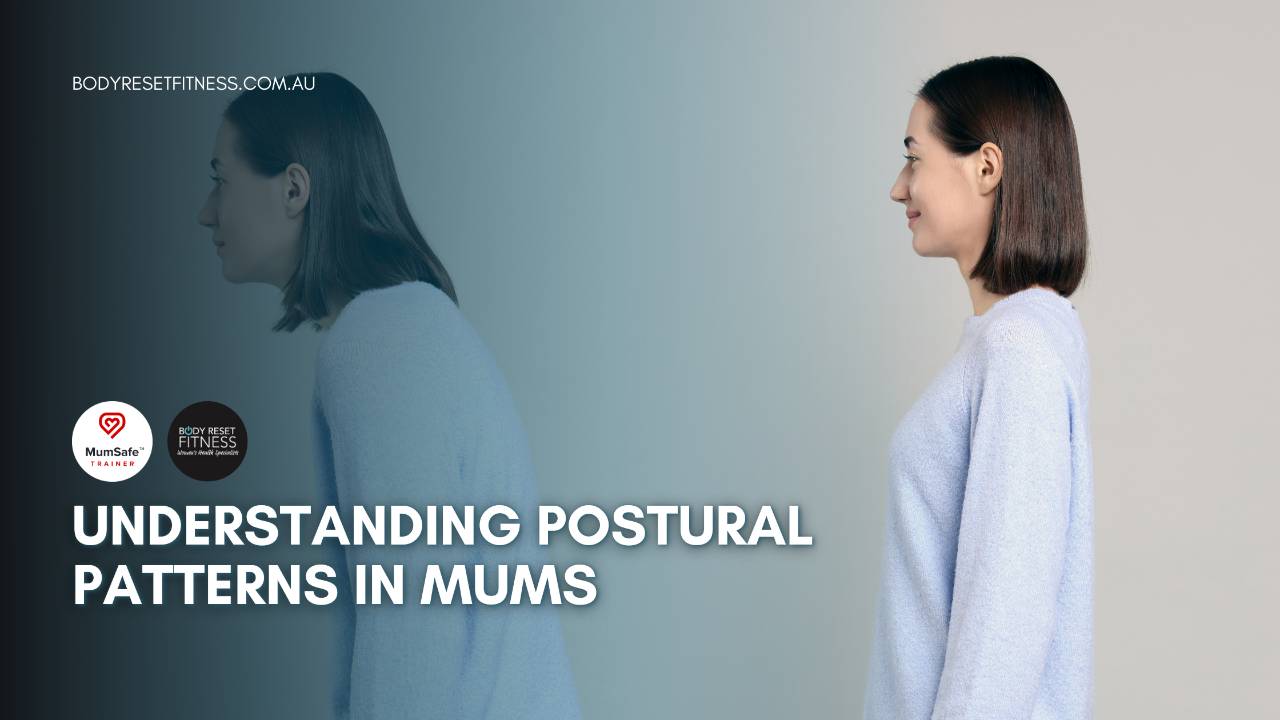Understanding Postural Patterns in Mums
Oct 08, 2025
After pregnancy and birth, many mums notice that their bodies feel different. Maybe your back aches more than it used to, or your shoulders feel tight, or your core doesn’t quite “switch on” the same way. These aren’t random changes — they’re part of what’s known as postural patterns.
Our posture is more than how we look when we stand or sit; it’s how our body has adapted to pregnancy, birth, scars, and the physical (and emotional) demands of motherhood. Understanding these patterns can make a huge difference in how we move, breathe, and recover.
What Are Postural Patterns?
Postural patterns are the habitual shapes your body takes on — often without you realising it — as a result of pregnancy, birth, daily movement habits, or even the way you hold your baby.
They matter because posture affects everything from how you breathe and move, to how effective your strength training will be.
Common Postural Patterns in Mums
1. Upper Cross Syndrome
This pattern shows up as rounded shoulders and a forward head posture — often from hours of feeding, carrying, or computer work. It tightens the chest and weakens the upper back, which makes exercises like rows much less effective (and sometimes frustrating).
2. Lower Cross Syndrome
Sometimes called the “Teletubby posture,” this shows up as short, tight hip flexors, weak glutes, and lengthened abs. The result? Back discomfort, poor core engagement, and instability that makes even simple movements feel off.
3. Abdominal Scar Posture
Common after a C-section, this pattern involves a tucked-under pelvis and a flat lower back. The scar tissue can subtly change how your body holds itself, influencing everything from your posture to your breathing.
The Role of Breathing Patterns
Posture and breath are deeply connected. Many mums fall into shallow chest or belly breathing, which limits the natural expansion of the ribs (intercostal expansion). This kind of breathing affects how your core and pelvic floor work together — reducing stability and overall strength.
Pain Isn’t Always Where the Problem Is
Here’s the tricky part: the place you feel pain isn’t always the root cause.
-
Neck pain often stems from a tight chest or forward head posture.
-
Low back pain can come from core instability or abdominal doming, not necessarily the back itself.
Understanding your body’s patterns helps you look beyond symptoms and address the why behind them.
Every Mum’s Body Tells a Story
No two recoveries are the same, and your posture reflects your unique journey — your pregnancy, your birth, your habits, your healing. By recognising and working with your postural patterns, you can support your body’s natural recovery process, improve strength and movement, and feel more at home in your body again.